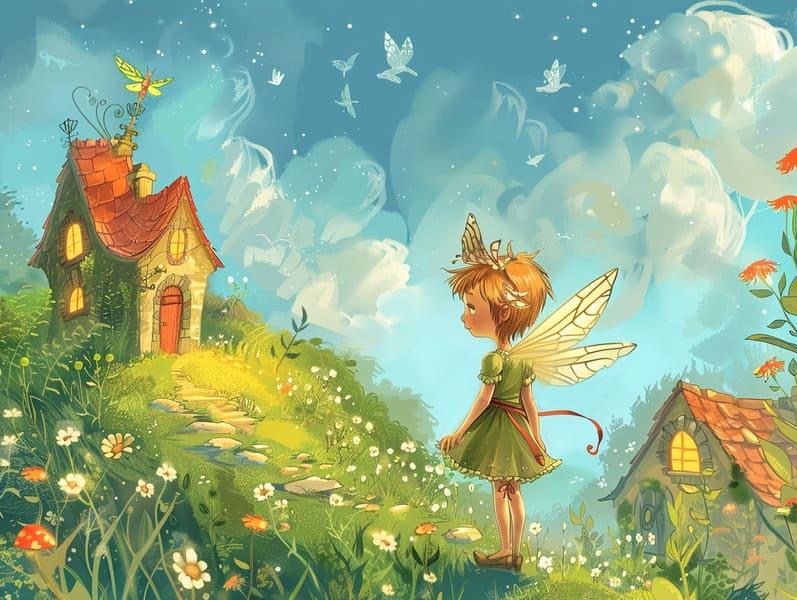The Formation of Mythical Fairy Tales and Their Eternal Elegance.
The Formation of Mythical Fairy Tales and Their Eternal Elegance.
Blog Article

Old fairy tales have ancient roots. These tales have been narrated from one generation to the next well before they were ever put on paper. They originated from a variety of backgrounds, including Asian traditions. They were initially disseminated among mature audiences, often carrying themes and messages mirroring the societal norms and beliefs of the time.
Jacob and Wilhelm Grimm, Jacob and Wilhelm, were among the first to compile and publish many of these beloved fairy tales. Their published works, "Grimm's Fairy Stories," included stories like "Ashenputtel," "Hansel and Grethel," and "The True Story of Snow White," which have since become staples in the world of classic fairy tales. Similarly, H. C. Andersen's enchanting stories, such as "The Mermaid," and "The Little Duckling," have captured hearts worldwide, solidifying their place in the pantheon of timeless fairy tales.
Despite their historical roots, classic fairy tales remain as relevant as ever, especially as kids' bedtime tales. These charming stories are now available in diverse formats, including vividly illustrated books, fantastical animations, and online storybooks.
Their unwavering allure can be linked to several whimsical characteristics:
Moral Lessons: Timeless fairy tales often teach important moral lessons. Narratives like "The Story of the Boy Who Cried Wolf" teach the significance of honesty, while "The Tortoise and the Hare" highlight the qualities of tenacity and humility. These narratives offer the young clear distinctions between correct and incorrect, helping to shape their moral compass in a gentle yet impactful way.
Kindness and Comprehension: Traditional fairy tales frequently present characters facing challenges and struggles, prompting audiences to identify with their struggles and root for their triumphs. For instance, "Beauty and Her Beast" demonstrates the merit of valuing inner qualities to comprehend the true being of a character, enhancing compassion and awareness.
Cultural Comprehension: Many traditional fairy tales are infused with the cultural contexts from which they developed. Immersing in these narratives can provide intriguing perspectives into different cultures, promoting a sense of cultural appreciation and recognition.
Imagination and Creativity: The enchanted elements in ancient fairy tales—talking beasts—inspire children’s fantasies. These fairy tales lead readers to fantastical realms, boosting inventive ideas and a sense of marvel that remains a lifetime.
Classic fairy tales are not only delightful but also informative. They function as fascinating tools in nurturing various intellectual and emotional capacities in young ones. When timeless fairy tales are narrated, they strengthen linguistic abilities by bringing new words and sophisticated sentence structures. This practice also improves auditory skills and mindfulness, as the young remain attentive, excited to see what happens next.
Furthermore, reflecting on the themes and characters of old fairy tales can enhance reasoning skills and reasoning skills. The young are educated to notice patterns, expect results, and realize cause and effect. These debates also encourage little ones convey their thoughts and feelings, enhancing their emotional intelligence.
In today’s high-tech era, the presence of internet fairy tales has made these narratives more attainable than ever. Websites and web apps check here extend comprehensive collections of bedtime fairy tales that can be accessed or heard anytime, anywhere. Fairy tales read aloud are particularly well-received, presenting an interactive way for kids to be a part of these mesmerizing stories. Audiobooks and narrated videos carry characters and settings to life, often complemented by whimsical audio effects and songs that augment the tale experience.
The unending appeal of old fairy tales lies in their ability to transform to modern society while holding onto their core messages. Contemporary versions of these stories often feature more diverse protagonists and modern settings, making them accessible to today’s audience. However, the core values of fearlessness, warmth, and truth remain unchanged, continuing to appeal to readers of all ages.
Classic fairy tales also offer a sense of security and homeliness. They extend a coherent narrative with a obvious beginning, middle, and end, often coming to a close with the conclusion of conflicts and the triumph of morality over immorality. This foreseeability can be encouraging for young readers, proffering a sense of steadfastness in an shifting world.
Ancient fairy tales continue to bewitch and educate new generations, maintaining their mystique and impact in modern society. As bedtime stories for kids, they extend a perfect blend of charm and understanding, sustaining moral values, empathy, and creativity. The presence of web-based fairy tales and the prevalence of fairy tales recited certify that these traditional fairy tales remain within reach to new generations.
By protecting and conveying these tales, we continue to laud the rich tapestry of creativity and cultural heritage. Whether you are viewing a vividly illustrated book, delving into a virtual collection, or hearing an read-aloud story, the elegance of famous fairy tales is always within reach. These tales emphasize of the steadfast ability of tales and its ability to bind us across centuries and lands.
Whether you are browsing a vividly illustrated book, delving into a web-based library, or hearing an narrated book, the wonder of famous fairy tales is always within reach.
These fairy tales remind us of the steadfast power of storytelling and its ability to bring us together across centuries and lands, forging a link that fascinates and enlightens alike.